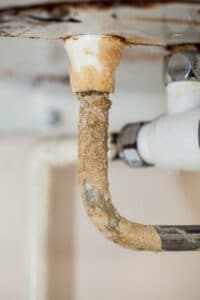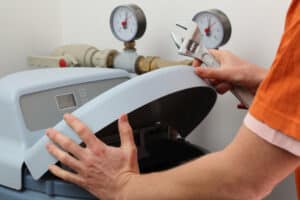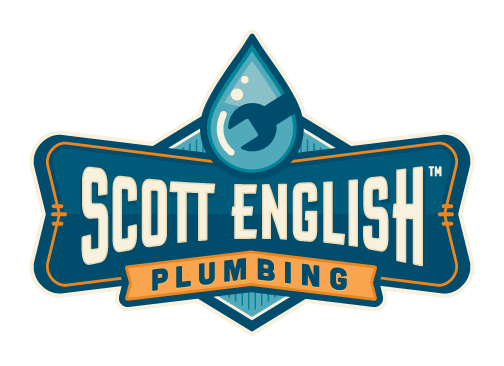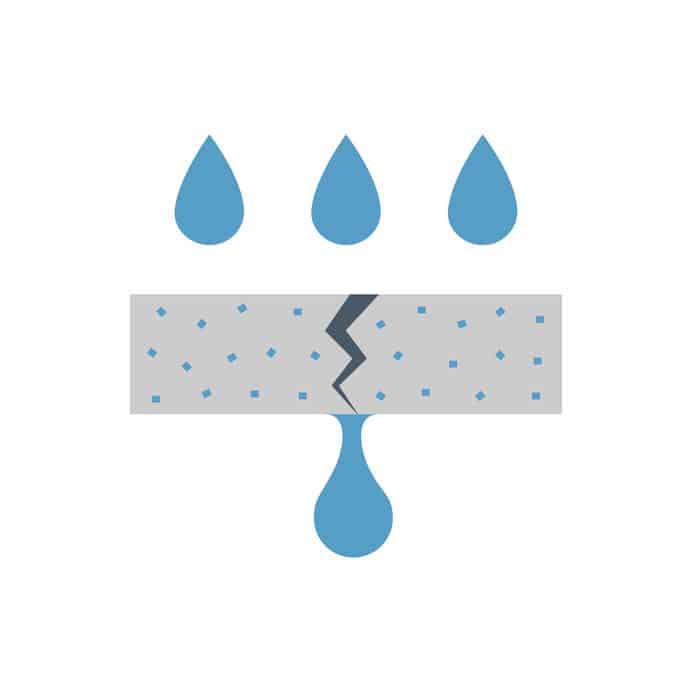The Effects of Hard Water on Your Plumbing System
Many homes have hard water simply because of the minerals that are present in the water supply. The term “hard water” means that there is a high level of minerals in the water, particularly calcium and magnesium. Hard water isn’t hazardous to your health, but it may not taste good and it can damage your plumbing system. You might also notice that hard water makes it difficult to lather your soap and rinse your hair and skin clean; you may feel like there is a film left behind on your skin.
Whether you get your water from a well or the municipal water supply, you need to do something to treat hard water. The best and simplest solution for dealing with hard water is to install a water softener in your home.
What is Hard Water?
Initially, let us try and understand what hard water is. Generally, it is defined as water that contains minerals, specifically high concentrations of calcium and magnesium. However, it should be clarified that not all water that contains minerals are considered as hard.

As it falls from the sky, water is empty of minerals; it really is just H20 – hydrogen and oxygen. When it lands on the ground and rolls down hill, the water picks up debris in the form of minerals like calcium and magnesium. We know that calcium is good for your bones and magnesium benefits several systems in the body, like the nervous system and circulatory system. Many municipalities and homeowners filter hard water to remove or “soften” out the minerals. If you use a well for your water, the minerals remain, unless you add a water softener to your plumbing system.
How to Tell if You Have Hard Water
If you aren’t sure whether you have hard water, one of the easiest places to spot evidence of hard water is on your showerhead. Look for white or yellow flaky buildup on the showerhead. You should also look for individual spray nozzles that are clogged or that are spraying in a strange direction. These are signs that the nozzles are clogged with calcium buildup from hard water. Additionally, if you have hard water, you will notice a scaly residue on your dishes after you run them through the dishwasher. Your clothing will become discolored, as hard water creates a dingy gray look to clothing. You will also notice that your clothes do not last long because of the hard water build up. Your bathtub, shower head, and sinks will develop a buildup of calcium which can be challenging to remove.
How Does Hard Water Damage Plumbing?
Hard water won’t make you sick, but it can ruin your plumbing The calcium that is present in hard water leaves deposits on the plumbing system. You may have noticed that you get a white or yellow flaky build-up on your fixtures, including your faucets, sinks, and showerheads. This buildup is an accumulation of calcium that is left behind by hard water. Obviously, this buildup is unattractive. It makes your fixtures look dirty, and it’s a hassle to clean it off since it builds up again so quickly.

If hard water leaves behind this visible buildup on the exterior of your plumbing fixtures, think about what it is doing to the inside of your plumbing system where you can’t see or clean it. These calcium deposits accumulate on the interior of the pipes. Over time, this accumulation builds up until it actually narrows the opening of the pipes and reduces the amount of water that can move through the pipes. Now, this probably won’t accumulate to the point where it completely blocks a pipe. However, it can decrease your water pressure and increase the odds of developing a clog.
Hard water can also cause problems with your water heater. The minerals in the hard water can cause the water heater tank to corrode, which can cause the water heater to fail. Hard water is hard on your water heater and can significantly decrease its lifespan. Installing a water softener will remove the minerals from the water and protect your water heater from corrosion, making it last much longer.
Hard water is rough on your plumbing. It leaves ugly buildup on fixtures and stains in sinks and tubs. It affects the inside of your plumbing system by creating buildup in the pipes that can decrease water pressure and lead to the formation of clogs. Perhaps worst of all, it can cause corrosion in your water heater, ultimately causing the water heater to fail.
Soften Your Water

The best way to deal with hard water is to have a water softener installed in your home. Water is softened by using a water softener. These usually need to be installed by a professional plumbing company. The softeners remove the minerals by using sodium molecules. The calcium and magnesium bind with the sodium molecules as the water moves through a specially designed filter. Water softeners usually require sodium tablets to effectively work. Softeners themselves can be automatic, so they soften the water as soon as it enters the home, but some are manual and require regular maintenance to keep the water free of minerals.
Types of Water Softeners Include
Ion Exchange Water Softener
Traditional water softening solution that replaces the hard minerals with potassium or sodium ions. The sodium ions contained in special beads are released as the hard water passes through it to complete the exchange. The sodium ions need to be regenerated once all the beads have been saturated.
This type of system relies on a brine tank where the salt is kept. The flushing cycle can be initiated manually, electronically, or with the use of a sensor. This system is simple, safe, and effective in addressing problems associated with hard water.
Salt-Free Hard Water Conditioners
Also known as Template Assisted Crystallization (TAC) technology, it is a salt-free solution to hard water. Instead of removing the minerals, it acts as a catalyst to form stable hardness crystals that do not stick to the surfaces. This is currently considered as the most effective non-salt water conditioning solution to prevent the formation of mineral scales.
TAC technology consistently reduces the level of hardness by more than 90%. This makes it more effective than electronic and magnetic water conditioning solutions that also prevent the formation of hard water scales. This solution also does not need regeneration or backwash so it is friendlier to the environment.
Polyphosphate
This conditioning solution is effective for cold water and low volume applications. Polyphosphate is dissolved in the water and begins to coat the calcium, magnesium, and iron minerals. This makes it impossible to precipitate the water and result in hard water problems.
The crystals are placed in a housing where the water will flow to dissolve it. This technology is available even in more traditional filtration solutions. These types of filters are effective when dealing with small amounts of water like those used with ice makers for example. This solution though may lead to bacterial contamination.
Magnetic and Electronic Water Conditioners
This fairly simple technology makes use of an energy field that is created to allow the water to flow through. When the water passes the field the hardness agents are altered to the point that precipitation is impossible. This means that it cannot attach to the fixtures, so the water can harmlessly pass down the drain. Although used predominantly in large scale operations, many detractors believe that this technology is not satisfactory for residential applications.
If you have hard water, contact Scott English Plumbing. We will come out to your home, assess your water, and give you a free estimate for the installation of a water softener. Get in touch with Scott English Plumbing today to learn more about how we can treat your hard water.




